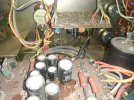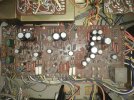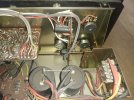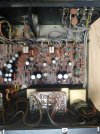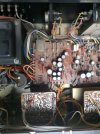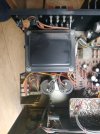They are FT 10MHz for the MJE and 60MHz for the BF-469/70 with 250V VCE. The BD-139/140 is 50Mhz.
I wouldn't use a Zetex transistor for anything- I just don't trust them. Back when Ferranti was Ferranti, but then they got sold out, restructured, sold again etc.
Anyway, just trying to help Pavel.
I appreciate it. However I have some experience as well, have been using simulations for 20 years and built amplifiers for 40years+, as you.
You are not right about BD139/140 fT. It is much, much higher in a real world parts and please see attached Philips datasheet. fT=160MHz. However the BD139/140 is not used here so why to bother.
Another point. It has to be stated that the circuit discussed here is not much of Luxman, but rather load-invariant Douglas Self topology just the CFP is not used. It will have far better parameters than the original Luxman. The amplifier world has not been frozen in 70's and 80's.
Copyright @Douglas Self

